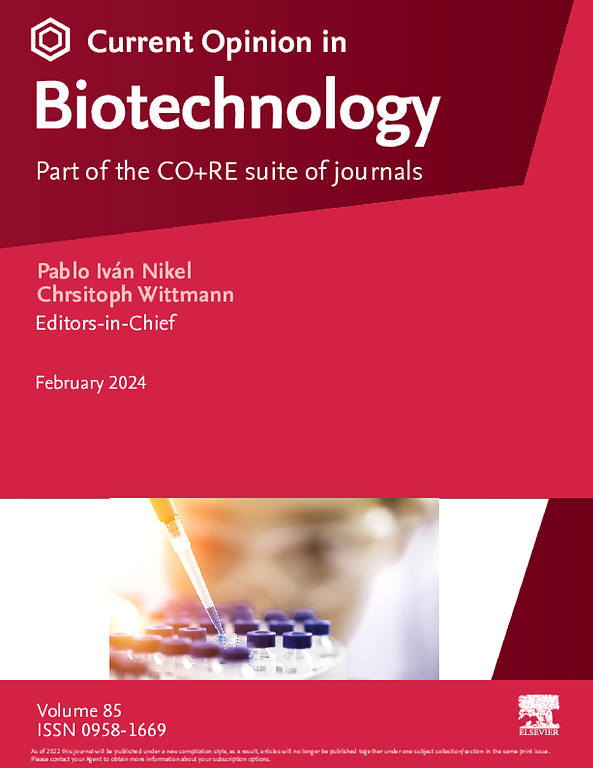National phosphorus planning for food and environmental security
IF 7
2区 工程技术
Q1 BIOCHEMICAL RESEARCH METHODS
引用次数: 0
Abstract
The dependence of countries on phosphorus fertilisers derived from phosphate rock to maintain crop yields and ensure food security is well established. Yet, exposure of national food systems to constrained reserves of phosphate rock and supply chain complexities still pose risks to farmers’ access to this critical nutrient in many countries. Whilst phosphorus scarcity can threaten food security, suboptimal fertiliser use and poor wastewater treatment can lead to pollution of freshwaters and coasts, causing eutrophication. This impacts biodiversity, drinking water and aquatic food production. In some countries, national plans targeting the recycling of phosphorus losses back into food production are being considered, offering environmental and socio-economic benefits. Here, we review the literature on assessing risks to food security and water quality associated with national reliance on phosphate rock as the primary source of phosphorus for fertilisers. The scientific community has developed data and tools to enable countries to assess exposure in food systems from phosphorus supply and management and in the environment from pollution. However, current assessment approaches often overlook economic vulnerability, a key gap that hinders our understanding of the urgency and severity of impacts from inaction. Exposure assessments could be used to develop National Sustainable Phosphorus Plans embedding priority actions and financial instruments across existing policy frameworks. Actions include identifying local to national sources and sites for phosphorus recycling, identifying catchments and ecosystems where the benefits of reducing phosphorus pollution are greatest, and establishing an infrastructure development plan to enable greater recycling and reduced pollution. We discuss four integrated actions that will enable countries to take the first steps towards a circular phosphorus economy in the context of a challenging global situation.
为粮食和环境安全制定国家磷规划。
各国依赖磷矿石提炼的磷肥来维持作物产量和确保粮食安全,这一点已得到公认。然而,在许多国家,国家粮食系统面临磷矿石储量有限和供应链复杂的风险,农民仍然难以获得这种重要的养分。磷的匮乏会威胁到粮食安全,而肥料使用不合理和废水处理不善则会导致淡水和海岸污染,造成富营养化。这会影响生物多样性、饮用水和水产食品生产。一些国家正在考虑制定国家计划,旨在将损失的磷重新用于粮食生产,从而带来环境和社会经济效益。在此,我们回顾了有关评估与国家依赖磷矿石作为化肥磷的主要来源有关的粮食安全和水质风险的文献。科学界已经开发出数据和工具,使各国能够评估磷供应和管理对粮食系统的影响以及磷污染对环境的影响。然而,目前的评估方法往往忽略了经济脆弱性,这一关键缺陷阻碍了我们对不作为所造成影响的紧迫性和严重性的理解。风险评估可用于制定国家可持续磷计划,将优先行动和金融工具纳入现有政策框架。行动包括确定从地方到国家的磷回收来源和地点,确定减少磷污染效益最大的集水区和生态系统,以及制定基础设施发展计划,以实现更大程度的回收和减少污染。我们讨论了四项综合行动,这些行动将使各国能够在充满挑战的全球形势下迈出实现循环磷经济的第一步。
本文章由计算机程序翻译,如有差异,请以英文原文为准。
求助全文
约1分钟内获得全文
求助全文
来源期刊

Current opinion in biotechnology
工程技术-生化研究方法
CiteScore
16.20
自引率
2.60%
发文量
226
审稿时长
4-8 weeks
期刊介绍:
Current Opinion in Biotechnology (COBIOT) is renowned for publishing authoritative, comprehensive, and systematic reviews. By offering clear and readable syntheses of current advances in biotechnology, COBIOT assists specialists in staying updated on the latest developments in the field. Expert authors annotate the most noteworthy papers from the vast array of information available today, providing readers with valuable insights and saving them time.
As part of the Current Opinion and Research (CO+RE) suite of journals, COBIOT is accompanied by the open-access primary research journal, Current Research in Biotechnology (CRBIOT). Leveraging the editorial excellence, high impact, and global reach of the Current Opinion legacy, CO+RE journals ensure they are widely read resources integral to scientists' workflows.
COBIOT is organized into themed sections, each reviewed once a year. These themes cover various areas of biotechnology, including analytical biotechnology, plant biotechnology, food biotechnology, energy biotechnology, environmental biotechnology, systems biology, nanobiotechnology, tissue, cell, and pathway engineering, chemical biotechnology, and pharmaceutical biotechnology.
 求助内容:
求助内容: 应助结果提醒方式:
应助结果提醒方式:


